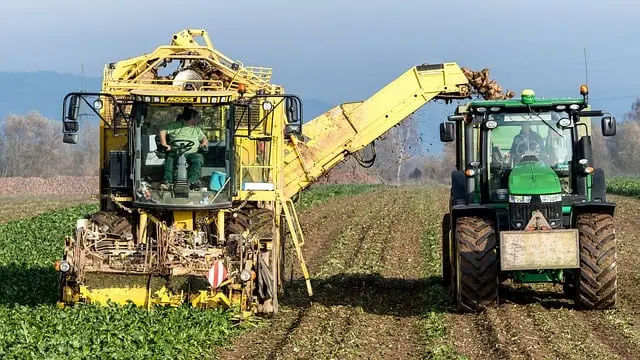The global trade in agricultural lubricants nearly whirrs by unnoticed, yet it underpins the machinery that feeds the world. Analysts now forecast sharp upward momentum before 2025, largely because contemporary implements demand more from their oils. Five words summarize the pull: machinery, sustainability, growth, bio-based, and efficiency. Each, in its own way, illuminates a different corner of the emerging landscape.

Machinery:
Modern farming seldom moves without steel-throated tractors or satellite-guided harvesters. Those gutsy machines rack up long shifts across dust storms, hail showers, and corroding salt flats. Agricultural Lubricants Market Superior grease-in oil, additives, and chemistry-combats friction, curbs wear, and shrinks the hours a farmer spends waiting for repairs. Specialty formulations formulated for turbo-powered, data-logged equipment have gone from niche to normal. By 2025, as more operations embrace autonomous drones beside diesel engines, overall lubricant volumes are poised to swell.
Sustainability: Greener Fields and Greener Oils
Recent years have seen a pronounced pivot toward greener lubricants in the agronomic sector. Growers, machinery firms, and public regulators all press for formulas that tread lightly on land and water alike. In traditional setups, crude-derived oils often seep into soils or streams and pose long-term harm. Plant-based and bio-sourced substitutes are now moving off the research bench and onto dealer shelves. Early adopters find that the greener options trim waste and still meet stiff corporate and legal benchmarks.
Growth: A Promising Market Outlook
Sector-watchers chart a steady rise for agricultural grease and oil markets through 2025. The lift comes from soaring food demand, heavier tillage schedules, and a newfound focus on preventive gear care. In parts of Asia and Latin America, fleets are modernizing at a brisk clip and pulling lubricants along with them. Engines, trans, hydraulics, and specialty greases alike are expected to show sharp volume gains.
Bio-Based Lubricants:
Farming Fluids in Tune with Ecology Rising ecological awareness has put bio-based lubricants in the spotlight. Crafted from renewable raw materials such as soybean oil or tallow, these fluids break down naturally and are much less harmful if they slip into soil or water. Agricultural planners highlight that the 2025 season is likely to see mass-scale adoption, as producers and growers start to grasp the long-term economic and environmental upsides.
Efficiency:
Running Farms on Less In contemporary agriculture, every operator chases the twin ghosts of economy and uptime. Specialty lubricants answer that call by trimming fuel bills, cutting service intervals, and prolonging the usable life of costly gear. Given that global appetites for food keep swelling, down time for repairs can translate into real financial loss. By the middle of this decade, the best oils are expected to boost not just engine health but the entire machinery ecosystem on the farm.
Final Thoughts
The lubricants sector will enter 2025 as more than a bit player in the drive for greener, leaner farming. Smarter implements, biodegradable products, and a laser focus on efficiency have turned engine oils from simple maintenance supplies into strategic assets. For many growers, opening a drum of the right lubricant will soon feel as mission-critical as fueling up the tractor itself.
Company Name: GMI RESEARCH
Email: enquiry@gmiresearch.com
Address: Dublin, Ireland
Website: https://www.gmiresearch.com/
GMI Research – Consulting & Market Research
tart writing here...